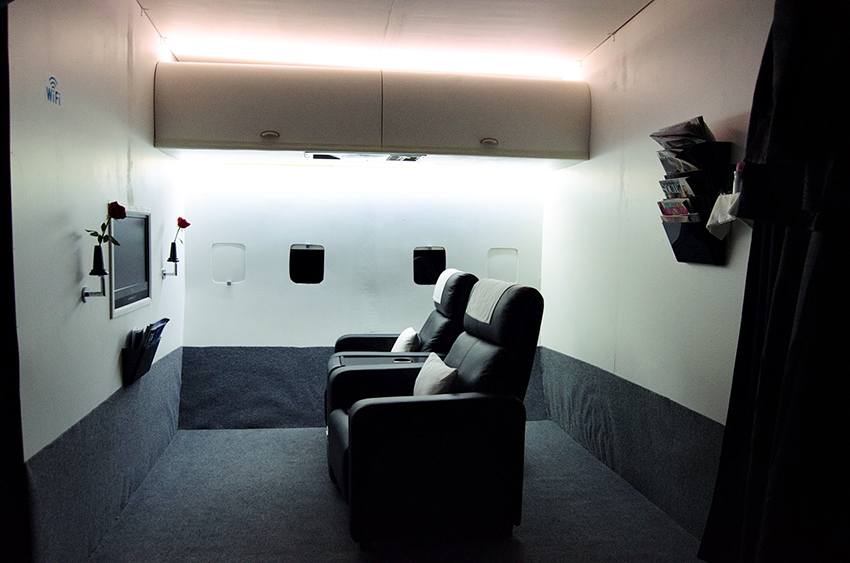Most people wouldn’t make a connection between theatrical design and airplanes. For Andrew Carson, however, combining the two fields offered a solution to a tiresome problem.
Carson, a theatrical design graduate student and lifelong aviation fan, used his knowledge of theater lighting to invent a more relaxing lighting system for airplane cabins in order to reduce jet lag.
Lumen Air, Carson’s final thesis project, uses smooth lighting transitions to imitate natural light, which helps the passengers’ circadian rhythms to match the timezone of their destination.
For example, a passenger who leaves in the afternoon for a flight to Europe might have difficulty with jet lag because of the six to nine hour time difference. After the 12-hour transatlantic flight, the passenger will arrive in the European morning, ready for a regular American night’s sleep.
The challenge is to use lighting to influence travellers to stay awake at the right time in their destination.
“It would help move people towards the time that they are arriving,” Carson said.
Passengers experience jet lag because air travel allows for quick movement between vastly different time zones, according to psychology professor Art Markman.
“Of course that will disrupt your day-night cycle,” Markman said. “For the first few days, it’s because you decide that you should be awake; that is, your body decides it ought to be morning by now.”
A person’s bedtime and wake time depends on their circadian rhythm clock, which can be affected by the presence of light, said David Schyner, a psychology professor who studies sleep deprivation.
“Obviously, for certain species like ourselves, being awake during the day is a good thing,” Schnyer said. “Light is very important for triggering a sleep response or a wake response.”
Carson engineered Lumen Air to imitate natural light because the circadian clock responds best to sunlight.
“We adapt to the things that are in our environment,” Markman said. “The very harsh kinds of lights that you can get from different kinds of electric lights, for example, are not things that we would have had much opportunity to adapt to.”
The lighting system eases passengers gradually into these different phases in a natural and less disruptive way than normal cabin lighting.
“The end of dinner transitions into a sleep period that slowly then transitions into waking up for arrival across the ocean,” Carson said. “So instead of getting these very staccato, very quick transitions, it’s something that’s much more smooth and guided.”
Carson said these lighting transitions are similar to theatre lights that convey story arcs in onstage storytelling.
“What he [Carson] wanted to do was identify the script of a flight,” said Michelle Habeck, a professor in the department of theatre and dance who worked with Carson on his thesis. “Instead of having the lights constantly moving quickly up and down, it creates something that’s more fluid and moves slower.”
So far, Lumen Air is only a full-scale prototype. Carson hopes to patent it and test it on an actual airplane within the next two years.
“My goal for the system is improving the travel experience,” he said. “It was very encouraging to me that the science is there, the technology is there, and it’s working.”















